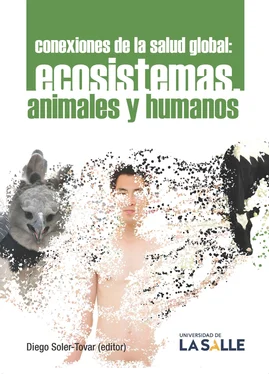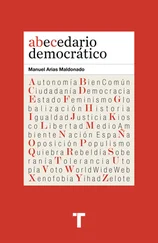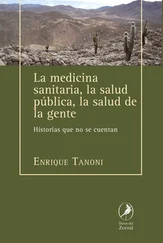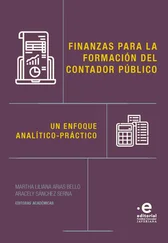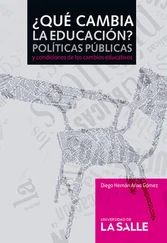Para progresar en la lucha contra las enfermedades que se generan por sus alteraciones, se requiere una nueva generación de modelos que incluyan la historia de vida de los patógenos (Caron et al., 2010; Friend, 2006; Lloyd-Smith et al., 2009; Osofsky et al., 2005) —lo cual es poco entendido en condiciones como las del neotrópico (Montenegro et al., 2010; Soler-Tovar et al., 2010)— y que se integren de manera cruzada las especies de huéspedes y las disciplinas científicas (Anderson et al., 2010; Caron et al., 2010; Friend, 2006; Lloyd-Smith et al., 2009).
Definitivamente, el entendimiento de la interacción entre el ambiente, las poblaciones de roedores, las poblaciones de humanos, los vectores y los organismos patógenos permite la identificación de determinantes comunes de enfermedad en humanos. Las enfermedades asociadas a roedores (especialmente urbanos) son cada vez más comunes y más problemáticas, por el crecimiento de las ciudades. Aquí las poblaciones pobres se encuentran en mayor riesgo de enfermedades asociadas a los roedores, debido a que la pobreza crea un entorno que fomenta especies sinantrópicas y hace que las personas sean más vulnerables a las enfermedades (Himsworth et al., 2013).
El clima y la estacionalidad tienen un efecto significativo en las poblaciones de roedores y los agentes causantes de enfermedades que pueden llegar a transmitir. En esta instancia, el comportamiento de los roedores y sus patógenos zoonóticos determina el riesgo de transmisión de la enfermedad de los roedores a las personas. Además, los tipos de patógenos zoonóticos y el número de roedores infectados pueden variar notablemente, incluso a través de una distancia muy corta. En este sentido, es necesario el desarrollo de estudios locales para evaluar el riesgo de enfermedad. Si se considera que la mayoría de los microorganismos mencionados son peligrosos para humanos, con la excepción de la peste, ninguno de ellos causa enfermedad en roedores (Himsworth et al., 2013).
Referencias
Anderson, T., Capua, I., Dauphin, G., Donis, R., Fouchier, R., Mumford, E., et al. (2010). FAO-OIE-WHO joint technical consultation on avian influenza at the human-animal interface. Influenza and Other Respiratory Viruses, 4(supl. 1), 1-29.
Audesirk, T., Audesirk, G. y Byers, B. E. (2003). Biología: La vida en la Tierra. México: Pearson Educación.
Baranton, G. y Old, I. (1995). The spirochaetes: a different way of life. Bulletin de l’Institu Pasteur, 93(2), 63-95.
Bose, M. (2008). Natural reservoir, zoonotic tuberculosis & interface with human tuberculosis: An unsolved question. The Indian Journal of Medical Research, 128(1), 4-6.
Buhnerkempe, M. G., Roberts, M. G., Dobson, A. P., Heesterbeek, H., Hudson, P. J. y Lloyd-Smith, J. O. (2015). Eight challenges in modelling disease ecology in multi-host, multi-agent systems. Epidemics, 10, 26-30.
Campbell, N. A. (2001). Biología: conceptos y relaciones. México: Pearson Educación.
Caron, A., De Garine-Wichatitsky, M., Gaidet, N., Chiweshe, N. y Cumming, G. (2010). Estimating dynamic risk factors for pathogen transmission using community level bird census data at the wildlife/domestic interface. Ecology and Society, 15(3), 25.
Cerqueira, G. M. y Picardeau, M. (2009). A century of Leptospira strain typing. Infection, Genetics and Evolution, 9(5), 760-768.
Clayton, D y Hills, M. (1993). Statistical models in epidemiology. Oxford University Press.
Cleaveland, S., Laurenson, M. K. y Taylor, L. H. (2001). Diseases of humans and their domestic mammals: Pathogen characteristics, host range and the risk of emergence. Philosophical Transactions of the Royal Society of London. Series B, Biological Sciences, 356(1411):991-999.
Coleman, P., Perry, B. y Woolhouse, M. (2001). Endemic stability-a veterinary idea applied to human public health. Lancet, 357(9264), 1284-1286.
Collinge, S. y Ray, C. (2006). Disease ecology. Nueva York: Oxford University Press.
Derne, B. T., Fearnley, E. J., Lau, C. L., Paynter, S. y Weinstein, P. (2011). Biodiversity and leptospirosis risk: a case of pathogen regulation? Medical Hypotheses, 77(3), 339-344.
Di Castri, F., Hansen, A. y Debussche, M. (1990). Biological invasions in Europe and the Mediterranean Basin. Dordrecht-Boston-Londres: Kluwer Academic Publishers.
Feng, A. y Himsworth, C. (2013). The secret life of the city rat: A review of the ecology of urban Norway and black rats. Urban Ecosystems, 17(1), 149-162.
Fenton, A. y Pedersen, A. (2005). Community epidemiology framework for classifying disease threats. Emerging Infectious Diseases, 11(12): 1815-1821.
Friend, M. (2006). Disease emergence and resurgence: The wildlife-human connection. Reston, VA: U. S. Geological Survey, Circular 1285.
Greger, M. (2007). The human/animal interface: emergence and resurgence of zoonotic infectious diseases. Critical Reviews in Microbiology, 33(4), 243-299.
Harper, K. y Armelagos, G. (2010). The changing disease-scape in the third epidemiological transition. International Journal of Environmental Research and Public Health, 7(2), 675-697.
Hay, S. (2001). The paradox of endemic stability. Trends Parasitol, 17(7), 310.
Haydon, D. T., Cleaveland, S., Taylor, L. H. y Laurenson, M. K. (2002). Identifying reservoirs of infection: a conceptual and practical challenge. Emerging Infectious Diseases, 8(12), 1468-1473.
Himsworth, C., Bidulka, J., Parsons, K., Feng, A., Tang, P., Jardine, C. et al. (2013). Ecology of Leptospira interrogans in Norway rats (Rattus norvegicus) in an inner-city neighborhood of Vancouver, Canada. PLoS Neglected Tropical Diseases, 7(6), e2270.
Jones, K., Patel, N., Levy, M., Storeygard, A., Balk, D., Gittleman, J. y Daszak, P. (2008). Global trends in emerging infectious diseases. Nature, 451(7181), 990-993.
Jones, B. A., Grace, D., Kock, R., Alonso, S., Rushton, J., Said, M. Y. y Pfeiffer, D. U. (2013). Zoonosis emergence linked to agricultural intensification and environmental change. Proceedings of the National Academy of Sciences, 110(21), 8399-8404.
Kivaria, F., Heuer, C., Jongejan, F., Okello-Onen, J., Rutagwenda, T., Unger, F. y Boehle, W. (2004). Endemic stability for Theileria parva infections in Ankole calves of the Ankole ranching scheme, Uganda. Onderstepoort Journal of Veterinary Research, 71(3), 189-195.
Lau, C. (2009). Urbanisation, climate change, and leptospirosis: environmental drivers of infectious disease emergence (pp. 83-87). Recuperado de http://www.ssi.dk/~/media/Indhold/DK%20-%20dansk/Smitteberedskab/Infektionshygiejne/Vandskade/leptospirose.ashx
Lau, C., Smythe, L., Craig, S. y Weinstein, P. (2010). Climate change, flooding, urbanization and leptospirosis: fuelling the fire? Transactions of the Royal Society of Tropical Medicine and Hygiene, 104(10), 631-638.
Lloyd-Smith, J., George, D., Pepin, K., Pitzer, V., Pulliam, J., Dobson, A., et al. (2009). Epidemic dynamics at the human-animal interface. Science, 326(5958), 1362-1367.
Mayr, E. (2016). Así es la biología. Madrid: Debate.
Meerburg, B., Singleton, G. y Kijlstra, A. (2009). Rodent-borne diseases and their risks for public health. Critical Reviews in Microbiology, 35(3), 221-270.
Middleton, J. y Saunders, P. (2015). 20 years of local ecological public health: the experience of Sandwell in the English West Midlands. Public Health, 129(10), 1344-1352.
Montenegro, O., Roncancio, N., Soler-Tovar, D., Cortés, J. y Contreras, J. (2010). Wild animal/domestic animal interface: possible diseases shared between populations of collared peccary (Pecari tajacu) and domestic pigs (Sus scrofa) in the north of their range in South America. Ponencia presentada en 59th Annual International Conference of the Wildlife Disease Association. Wildlife Disease Association. Iguazú, Argentina.
Organización de las Naciones Unidas para la Alimentación y la Agricultura, Organización Mundial de Sanidad Animal y Organización Mundial de la Salud. (2010). The FAO-OIE-WHO collaboration. Sharing responsibilities and coordinating global activities to address health risks at the animal-human-ecosystems interfaces. A tripartite concept note. s. l.: autor.
Читать дальше
